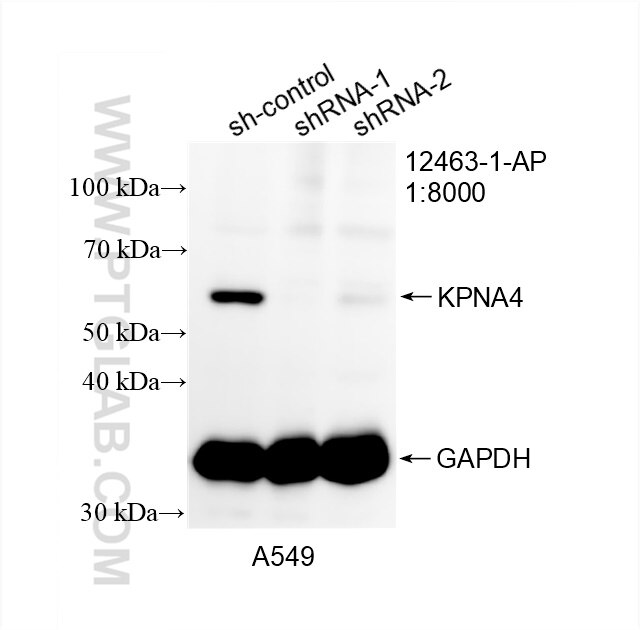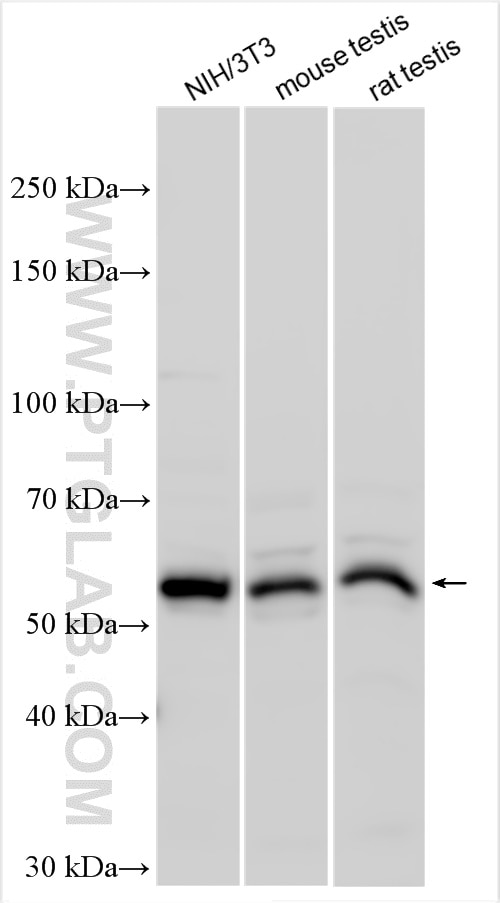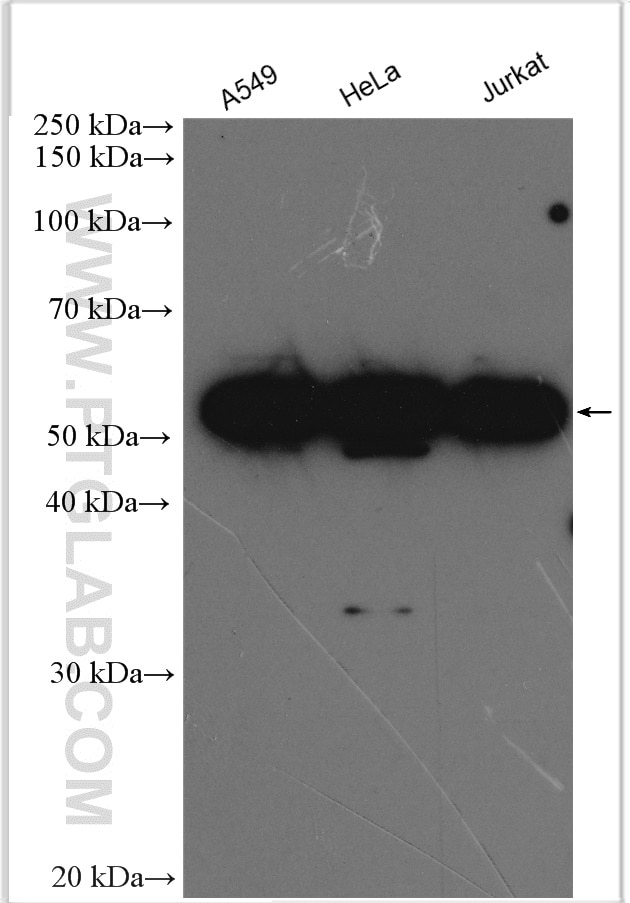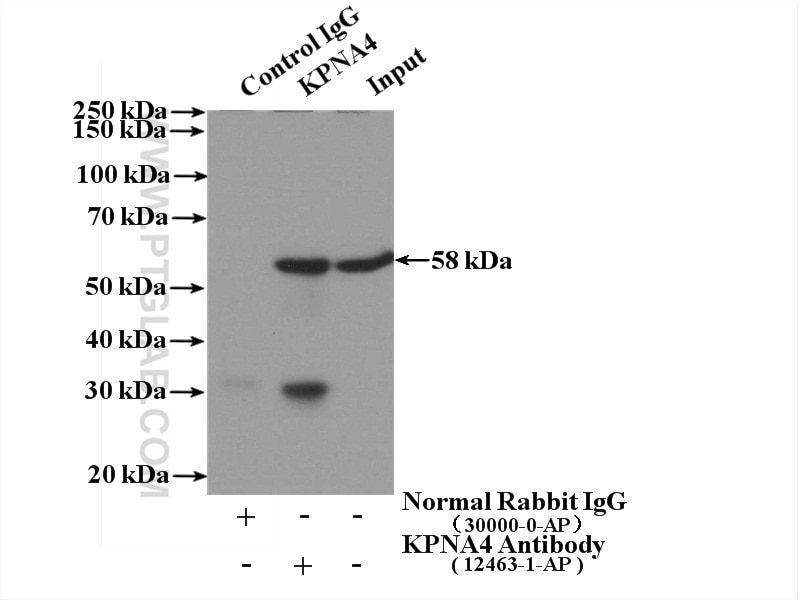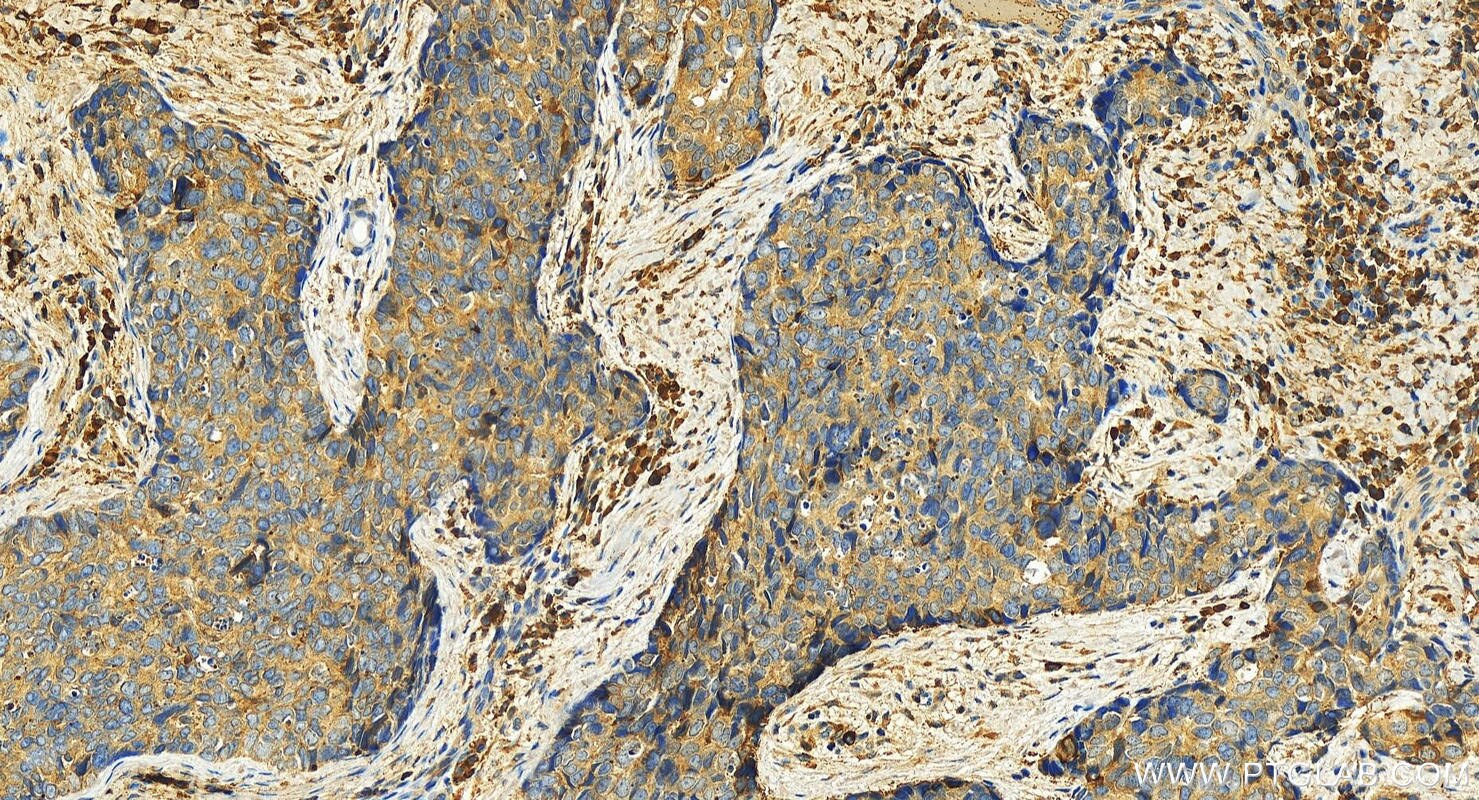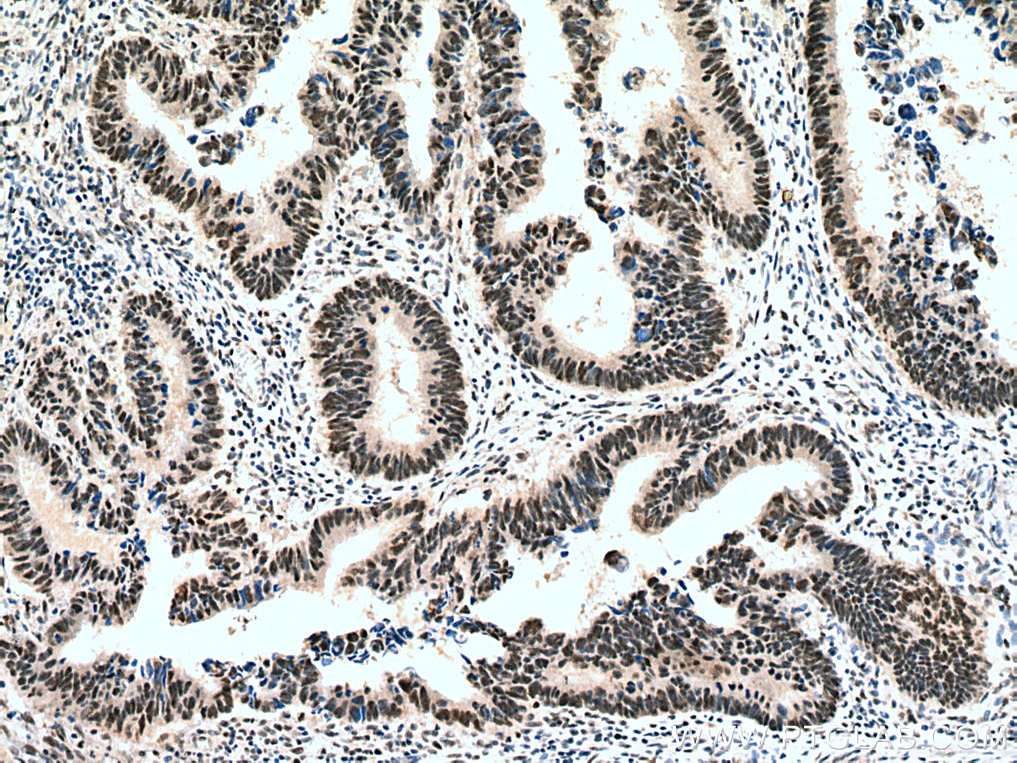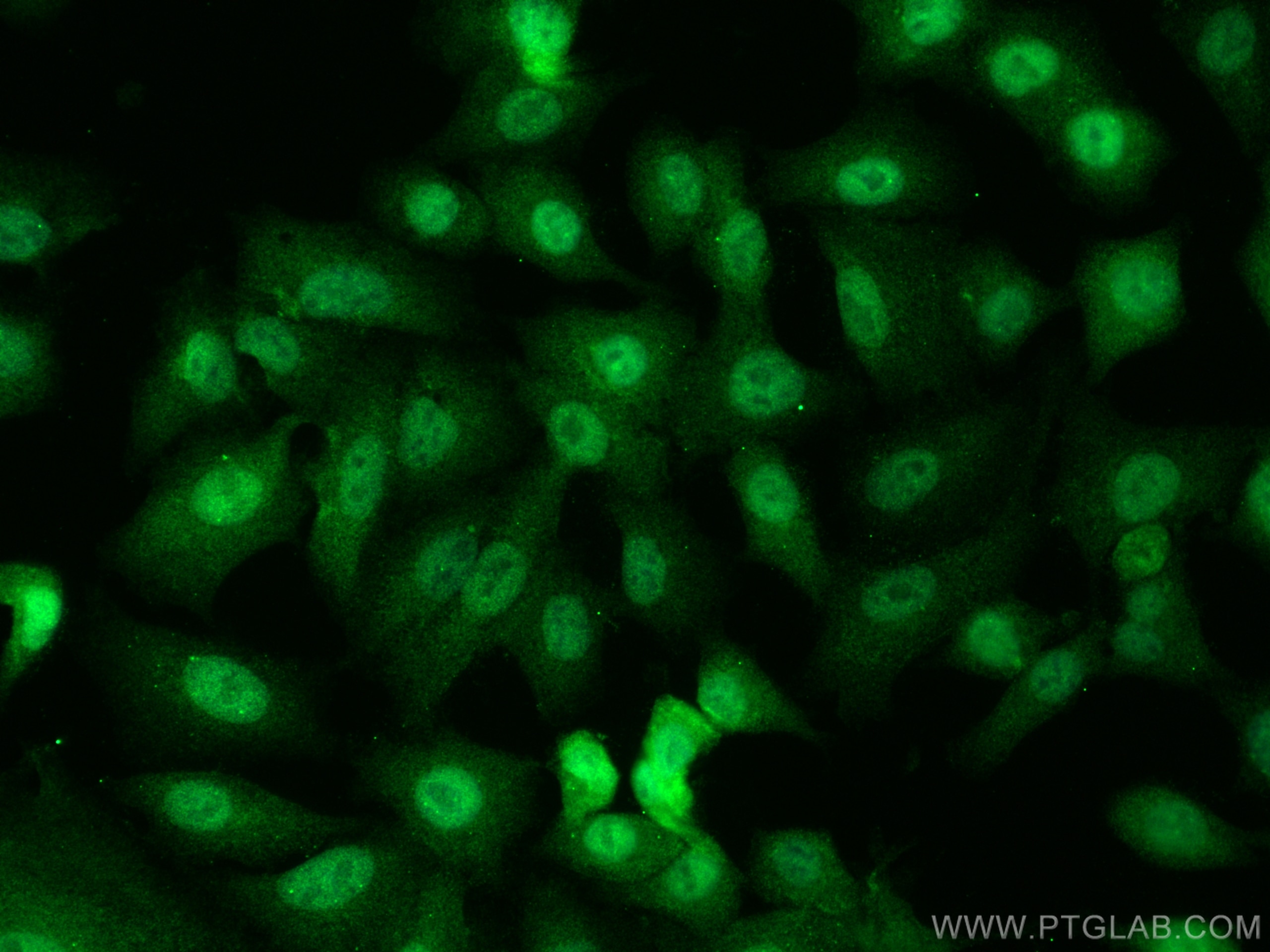Validation Data Gallery
Tested Applications
| Positive WB detected in | A549 cells, NIH/3T3 cells, HeLa cells, Jurkat cells, mouse testis tissue, rat testis tissue |
| Positive IP detected in | A549 cells |
| Positive IHC detected in | human colon cancer tissue, mouse brain tissue Note: suggested antigen retrieval with TE buffer pH 9.0; (*) Alternatively, antigen retrieval may be performed with citrate buffer pH 6.0 |
| Positive IF/ICC detected in | A549 cells |
Recommended dilution
| Application | Dilution |
|---|---|
| Western Blot (WB) | WB : 1:1000-1:8000 |
| Immunoprecipitation (IP) | IP : 0.5-4.0 ug for 1.0-3.0 mg of total protein lysate |
| Immunohistochemistry (IHC) | IHC : 1:200-1:1000 |
| Immunofluorescence (IF)/ICC | IF/ICC : 1:200-1:800 |
| It is recommended that this reagent should be titrated in each testing system to obtain optimal results. | |
| Sample-dependent, Check data in validation data gallery. | |
Published Applications
| KD/KO | See 1 publications below |
| WB | See 9 publications below |
| IF | See 1 publications below |
| CoIP | See 1 publications below |
Product Information
12463-1-AP targets KPNA4 in WB, IHC, IF/ICC, IP, CoIP, ELISA applications and shows reactivity with human, mouse, rat samples.
| Tested Reactivity | human, mouse, rat |
| Cited Reactivity | human, mouse |
| Host / Isotype | Rabbit / IgG |
| Class | Polyclonal |
| Type | Antibody |
| Immunogen |
CatNo: Ag3133 Product name: Recombinant human KPNA4 protein Source: e coli.-derived, PGEX-4T Tag: GST Domain: 1-350 aa of BC034493 Sequence: MADNEKLDNQRLKNFKNKGRDLETMRRQRNEVVVELRKNKRDEHLLKRRNVPHEDICEDSDIDGDYRVQNTSLEAIVQNASSDNQGIQLSAVQAARKLLSSDRNPPIDDLIKSGILPILVHCLERDDNPSLQFEAAWALTNIASGTSEQTQAVVQSNAVPLFLRLLHSPHQNVCEQAVWALGNIIGDGPQCRDYVISLGVVKPLLSFISPSIPITFLRNVTWVMVNLCRHKDPPPPMETIQEILPALCVLIHHTDVNILVDTVWALSYLTDAGNEQIQMVIDSGIVPHLVPLLSHQEVKVQTAALRAVGNIVTGTDEQTQVVLNCDALSHFPALLTHPKEKINKEAVWFL 相同性解析による交差性が予測される生物種 |
| Full Name | karyopherin alpha 4 (importin alpha 3) |
| Calculated molecular weight | 521 aa, 58 kDa |
| Observed molecular weight | 58 kDa |
| GenBank accession number | BC034493 |
| Gene Symbol | KPNA4 |
| Gene ID (NCBI) | 3840 |
| RRID | AB_2133821 |
| Conjugate | Unconjugated |
| Form | |
| Form | Liquid |
| Purification Method | Antigen affinity purification |
| UNIPROT ID | O00629 |
| Storage Buffer | PBS with 0.02% sodium azide and 50% glycerol{{ptg:BufferTemp}}7.3 |
| Storage Conditions | Store at -20°C. Stable for one year after shipment. Aliquoting is unnecessary for -20oC storage. |
Background Information
KPNA4, also named importin subunit alpha-3, karyopherin-alpha4, is a cytoplasmic protein that recognizes nuclear localization signals (NLSs) and dock NLS-containing proteins to the nuclear pore complex. Nuclear import, mediated in part by karyopherin-α (KPNA)/importin-α subtypes, regulates transcription factor access to the genome and determines cell fate. KPNA4-mediated nuclear transport of Ras-responsive element-binding protein (RREB1), which sustains Ras/ERK pathway signaling through repressing miR-143/145 expression (PMID: 31822798). KPNA4 is one of the main isoforms that is activated in many human cancers. KPNA4 expression was elevated in head and neck of squamous cell carcinoma (PMID: 33188837).
Protocols
| Product Specific Protocols | |
|---|---|
| IF protocol for KPNA4 antibody 12463-1-AP | Download protocol |
| IHC protocol for KPNA4 antibody 12463-1-AP | Download protocol |
| IP protocol for KPNA4 antibody 12463-1-AP | Download protocol |
| WB protocol for KPNA4 antibody 12463-1-AP | Download protocol |
| Standard Protocols | |
|---|---|
| Click here to view our Standard Protocols |
Publications
| Species | Application | Title |
|---|---|---|
Virol Sin African Swine Fever Virus MGF360-12L Inhibits Type I Interferon Production by Blocking the Interaction of Importin α and NF-κB Signaling Pathway. | ||
Oncogene The Wnt/β-catenin/VASP positive feedback loop drives cell proliferation and migration in breast cancer.
| ||
J Neurosci The subcellular distribution of HDAC1 in neurotoxic conditions is dependent on serine phosphorylation. | ||
Tumour Biol Reanalysis of microRNA expression profiles identifies novel biomarkers for hepatocellular carcinoma prognosis. | ||
Cell Death Dis Oncometabolite fumarate facilitates PD-L1 expression and immune evasion in clear cell renal cell carcinoma |

